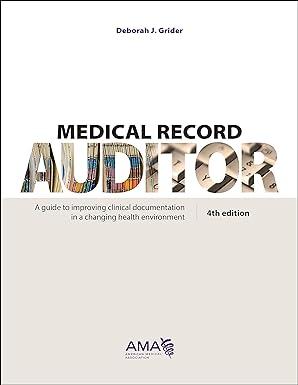Question
ASC 250 Accounting Changes and Error Corrections This case clarified the treatment of accounting changes after acquisitions. As we have seen, FASBs guidance comes through
ASC 250 Accounting Changes and Error Corrections
This case clarified the treatment of accounting changes after acquisitions. As we have seen, FASBs guidance comes through ASC 805 Business Combinations. However, the guidance for other types of accounting changes is in ASC 250 Accounting Changes and Error Corrections. This section will integrate accounting changes after an acquisition with the accounting changes listed in ASC 250.
ASC 250 lists four types of accounting changes.
Change in Accounting Principle for example, a new revenue-recognition standard
Change in Accounting Estimate for example, change in estimated useful life of a depreciable asset
Change in Reporting Entity
Correction of an Error in previously issued financial statements for example, last periods inventory and therefore retained earnings were overstated
One particularly confusing element of ASC 250 is the category called change in reporting entity. To the unwary observer this sounds a lot like an acquisition, but that is actually not the case. The reason that the distinction is critical is that ASC 250 prescribes a retroactive accounting to change in reporting entity, but as we just saw the accounting treatment for acquisitions is prospective, with only limited pro-formal retroactive disclosures.
The key accounting question for these four types of changes and errors is whether the change is accounted for retrospectively or prospectively. In the former case, we adjust previous financial statements to reflect the new information. In the latter case, we make no adjustments to previous financial statements.
To help you become more familiar with these terms and the requirements of the codification, Work Schedule 6 lists the four scenarios covered by ASC 250. As the schedule shows, three of the four scenarios are treated retrospectively, including a change in reporting entity. To gain a better understanding of what retrospective and prospective means, please identify the paragraph number that prescribes the appropriate accounting treatment (retrospective or prospective) to the four scenarios. Although you are only asked to identify the paragraph number, it is suggested that you also identify the specific word(s) in the paragraph that indicate retrospective or prospective treatment for each of the four types of changes.
| Work Schedule 6. ASC 250 Accounting Changes and Error Corrections. | ||
| For: | Accounting Treatment | Paragraph Number |
|
|
|
|
| Change in Accounting Principle | Retrospective |
|
| Indicate the paragraph number in the box above and copy and paste the paragraph and highlight/underline the words indicating retrospective application. | ||
|
| ||
|
|
|
|
| Change in Accounting Estimate | Prospective |
|
| Indicate the paragraph number in the box above and copy and paste the paragraph and highlight/underline the words indicating prospective application.
| ||
|
| ||
|
|
|
|
| Change in Reporting Entity | Retrospective |
|
| Indicate the paragraph number in the box above and copy and paste the paragraph and highlight/underline the words indicating retrospective application.
| ||
|
| ||
|
|
|
|
| Correction of an Error | Retrospective |
|
| Indicate the paragraph number in the box above and copy and paste the paragraph and highlight/underline the words indicating retrospective application.
| ||
|
| ||
As the schedule indicates, changes and corrections are accounted for retrospectively, with the exception of a change in estimate which is accounted for prospectively. Our focus here is to clarify that changes in accounting entity does not cover acquisitions. According the ASC 250-10-34-21, Changes in Accounting entity consists of an accounting change that results in a different reporting entity. To the casual observer, acquisitions would seem to fit this category, with the requirement of retroactive restatement of all prior periods as if the acquired company had always been a part of the acquirer. However, this is not the case, as ASC 250-10-20 indicates (emphasis added):
A change in reporting entity is limited mainly to the following:
Presenting consolidated or combined financial statements in place of financial statements of individual entities
Changing specific subsidiaries that make up the group of entities for which consolidated financial statements are presented
Changing the entities included in combined financial statements.
Item (b) at first view seems to include acquisitions, however the codification adds the following exclusionary statement:
Neither a business combination accounted for by the acquisition method nor the consolidation of a VIE pursuant to topic 810 is a change in reporting entity.
To summarize, change in reporting entity, which are accounted for retroactively, relates to the decision to consolidate existing subsidiaries (a topic that is sometimes covered in a senior-level accounting course). It does not relate to newly-acquired subsidiaries, which are accounted for prospectively with limited retrospective disclosures. The main takeaway is that acquisitions are not covered by change in reporting entity and receive prospective accounting treatment with only limited retrospective disclosures.
Step by Step Solution
There are 3 Steps involved in it
Step: 1

Get Instant Access to Expert-Tailored Solutions
See step-by-step solutions with expert insights and AI powered tools for academic success
Step: 2

Step: 3

Ace Your Homework with AI
Get the answers you need in no time with our AI-driven, step-by-step assistance
Get Started


